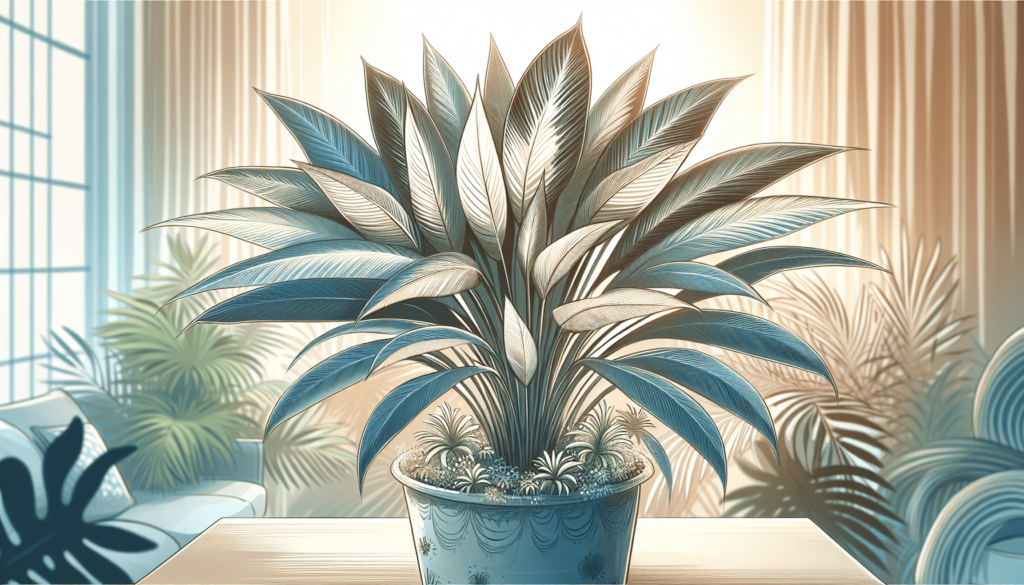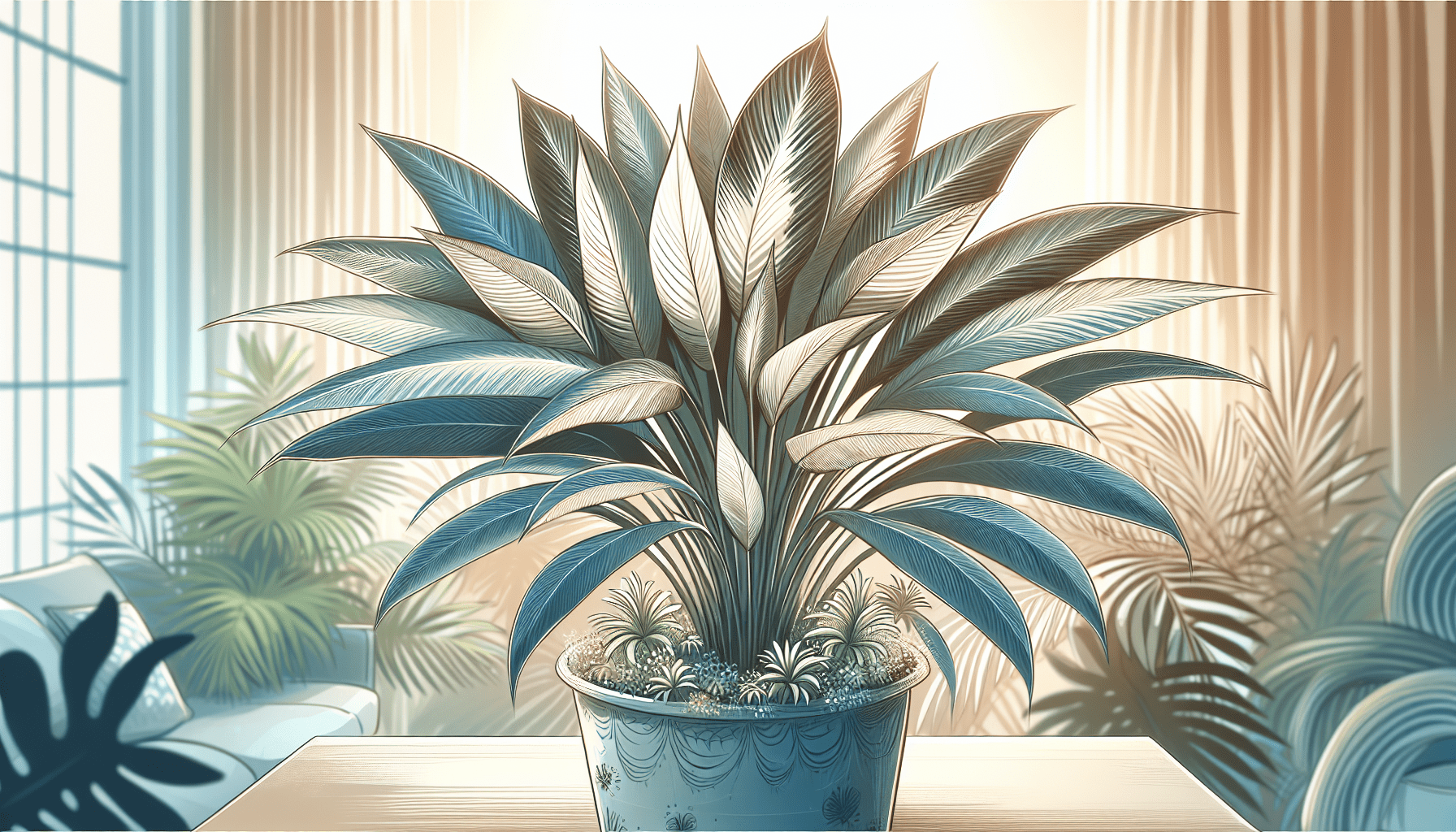How Indoor Plants Can Trigger Allergies” explores the surprising connection between your green leafy friends and those unexpected sneezes or itchy eyes you might experience. While indoor plants undoubtedly beautify your space and improve air quality, certain species can also release pollen, mold, or other allergens that contribute to your discomfort. In this article, you’ll discover how specific plants might be affecting your well-being, and you’ll gain valuable insights on how to create a more allergy-friendly indoor environment. Have you ever wondered if your beautiful indoor plants could be causing your sneezes and itchy eyes? It’s a common question and a crucial one if you’re keen on maintaining a healthy, comfortable home environment. You might be surprised to learn that while indoor plants offer numerous benefits such as improving air quality, reducing stress, and enhancing your home’s aesthetic, they can also be culprits when it comes to triggering allergies.

The Link Between Indoor Plants and Allergies
Indoor plants have gained popularity due to their ability to purify air, increase humidity, and offer a touch of nature within our homes. However, these benefits can come at a cost, especially if you’re prone to allergies. This section will delve into how and why indoor plants can cause allergic reactions, shedding light on an often overlooked aspect of home gardening.
Allergens in Plants
When talking about plant-related allergies, the usual suspects are pollen, mold, and plant sap. These allergens may cause a variety of symptoms ranging from mild to severe, and understanding them will help you manage your allergies better.
Pollen
Pollen is the most common allergen associated with plants. While most people think of pollen as an outdoor issue, many houseplants can produce pollen too. Spider plants, orchids, and even some ferns are known to release pollen, which can exacerbate allergies.
Mold
Indoor plants require regular watering, which creates a humid environment—a perfect setting for mold to grow. Mold spores can become airborne and, when inhaled, can cause allergic reactions. Mold is not only found in the soil but can also grow on plants’ leaves, making it an unwelcome yet common issue.
Plant Sap
Certain indoor plants, when bruised or damaged, release sap that can cause skin irritation and allergic reactions. Plants like Dieffenbachia (Dumb Cane) and Euphorbia (crown of thorns) can be especially problematic.
Symptoms of Plant-Induced Allergies
Identifying whether indoor plants are the culprits behind your allergies involves recognizing the symptoms. Allergies can manifest differently in each individual, making it essential to observe your reactions closely.
| Symptom | Description |
|---|---|
| Sneezing | Frequent, often explosive, sneezing fits. |
| Runny or Stuffy Nose | Constant nasal drainage or congestion. |
| Itchy, Watery Eyes | Persistent itchiness and tear production. |
| Skin Rash | Red, itchy patches on the skin, particularly after touching the plant. |
| Coughing | An irritating cough without any other apparent cause. |
| Breathing Difficulties | Wheezing or shortness of breath. |
Confirming Plant-Related Allergies
If you experience any of these symptoms, it’s crucial to confirm whether your indoor plants are the trigger. One effective way is to temporarily remove the suspected plants from your environment and monitor your symptoms. Alternatively, an allergist can perform tests to identify specific plant allergens.
How Indoor Plants Expose You to Allergens
Understanding the mechanisms through which indoor plants expose you to allergens is critical in finding solutions. This section will address the various ways in which plants release and spread allergens in your home.
Pollen Release and Distribution
Most plants release pollen as part of their reproductive cycle. While some plants are wind-pollinated and release large amounts of pollen, others rely on insects and release less pollen but can still trigger allergies.
Wind-Pollinated Plants
Wind-pollinated plants are notorious for releasing and spreading pollen widely. When you water, move, or even touch these plants, pollen can be dispersed throughout your home.
Insect-Pollinated Plants
These plants release less pollen, but it can still become airborne and cause allergies. Insect-pollinated plants include some popular indoor choices like peace lilies and begonias.
Mold Growth and Spores
Mold thrives in moist conditions, making the soil and sometimes the plant itself a fertile ground for mold growth. When mold spores are disturbed, they become airborne and can cause allergic reactions upon inhalation. Here are some conducive conditions for mold growth:
Over-Watering
Consistently damp soil creates the perfect environment for mold. Over-watering is a common mistake many plant owners make, unintentionally fostering mold growth.
Poor Ventilation
Good ventilation helps to keep air dry and mold-free. Unfortunately, not all indoor spaces offer adequate airflow, leading to higher humidity and mold growth.
Plant Sap and Physical Contact
Contact with plant sap can cause allergic reactions in sensitive individuals. Certain compounds in the sap can cause dermatitis (skin inflammation) upon contact.
Pruning and Cutting
When you prune or cut your plants, sap can ooze out and come in contact with your skin, causing irritation.
Accidental Bruises
Plants can release sap when accidentally bruised or damaged, during activities like moving or repotting.
Managing Plant-Related Allergies
Now that you know how indoor plants can trigger allergies, let’s explore steps you can take to manage and reduce allergen exposure. Effective management can allow you to enjoy the benefits of indoor plants without compromising your health.
Choosing Allergy-Friendly Plants
One of the first steps in managing plant-related allergies is selecting plants that are less likely to cause allergic reactions. Here are some allergy-friendly indoor plants:
| Allergy-Friendly Plants | Description |
|---|---|
| Spider Plant | Known for its air-purifying qualities and low maintenance. |
| Aloe Vera | A succulent that is unlikely to release airborne allergens. |
| Bamboo Palm | Great for humidifying air without producing pollen or mold. |
| Pothos | A hardy plant that doesn’t release pollen. |
| Snake Plant | Low maintenance and effective in filtering airborne toxins. |
| Dracaena | Adds a touch of greenery without significant allergen risk. |
Proper Care and Maintenance
Proper plant care can significantly reduce allergen risks. Here are some key maintenance strategies:
Controlled Watering
Avoid over-watering to prevent mold growth. Allow the soil to dry out between waterings to reduce humidity levels that mold thrives in.
Adequate Ventilation
Ensure your indoor space is well-ventilated. Use fans or open windows regularly to maintain airflow and keep humidity low.
Regular Cleaning
Dust and clean your plants and their surroundings to remove pollen and mold spores. Use a damp cloth to wipe down leaves and a vacuum with a HEPA filter to clean the area.
Handling Plants with Care
When you need to prune or repot your plants, take precautions to avoid sap contact and reduce allergen spread.
Use Gloves
Wearing gloves while handling plants can protect your skin from potential irritants like sap.
Clean Tools
Ensure gardening tools are clean before and after use to prevent the transfer of mold spores and other allergens.
Indoor Air Quality
Maintaining good indoor air quality is crucial for managing allergies. Here are some ways to improve air quality in your home:
Air Purifiers
Consider using air purifiers equipped with HEPA filters to capture airborne allergens like pollen and mold spores.
Dehumidifiers
Use dehumidifiers to keep indoor humidity levels below 50%, which can deter mold growth.
Housekeeping
Regularly clean your home to minimize dust and allergen buildup. Pay special attention to areas around plants.
Seeking Medical Advice
If you find it challenging to manage your allergies despite these measures, it’s essential to seek medical advice. An allergist can help identify specific triggers and recommend treatments.
Allergy Testing
Allergy tests can help confirm which specific plants or allergens are causing your symptoms. Common tests include:
Skin Prick Test
A small amount of allergen is applied to your skin using a needle. If you’re allergic, a small bump will appear.
Blood Test
A blood test measures the level of IgE antibodies to specific allergens in your blood.
Treatment Options
Based on your test results, your doctor might recommend treatments such as:
Antihistamines
Over-the-counter or prescription antihistamines can relieve allergy symptoms by blocking histamine, a substance your body releases during an allergic reaction.
Nasal Corticosteroids
These sprays reduce inflammation in your nasal passages, helping to alleviate symptoms like congestion and sneezing.
Immunotherapy
Allergy shots or sublingual tablets can gradually desensitize your immune system to specific allergens, providing long-term relief.

Conclusion
While indoor plants can indeed trigger allergies, understanding the risk factors and taking preventive measures can help you enjoy the myriad benefits they offer without compromising your health. From selecting allergy-friendly plants to maintaining proper care and seeking professional advice, you can create a balanced indoor environment that supports both your love for greenery and your well-being.
Remember, the key to managing plant-related allergies lies in awareness and proactive steps. By following the guidelines mentioned in this article, you can turn your home into a sanctuary where you and your indoor plants can thrive together harmoniously. Happy gardening!
